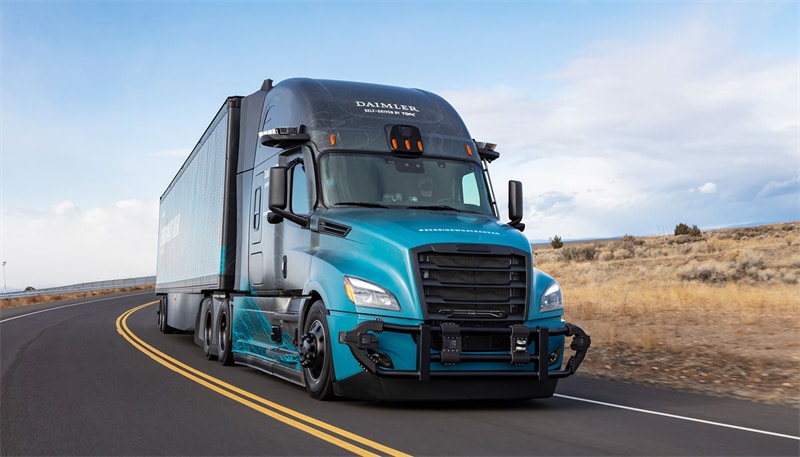
Currently, the transportation industry is undergoing an important change, with innovative technological developments coming forth.
In 2022, the global market for transport services was valued at approximately $7.31 trillion. It was estimated that the figure would increase to nearly $15.94 trillion by 2032. This expansion is marked by a steady CAGR of 8.11% between the 2023 and 2032 forecast periods.
Here, technologies ranging from advanced trucking accounting software management to self-driving vehicles can transform the way goods are transported. Automatically, it helps to enhance business sustainability, efficiency, and profitability, which are essential for this industry.
In this article, we will discuss the essential tech trends and tools that are said to carry forward this transformation and ensure more business development in the transportation domain.
The Era of Self-Driving Trucks

The technology used for self-driving trucks is still being worked upon. It needs to move ahead of specific hurdles, like enhancing driverless software for effectively operating on urban streets that have high traffic. But it certainly is an essential trend in the transportation domain.
Keeping in mind a long-term view, transportation businesses need to get ready for this technology and add features like self-navigating management systems to their trucks. The use of AI and myriad sensors has allowed AI-enabled vehicles to precisely assess road conditions. They can figure out the way truck drivers tend to behave under normal conditions on the streets.
Using V2V (vehicle-to-vehicle) communications, trucks can share their learned data and ensure other vehicles operate smartly. That aside, 5G technology is becoming prevalent and will result in the adoption of self-driving fleets. In the future, such vehicles have a chance to turn out as better drivers compared to human operators.
Surprisingly, the future is way closer than you can imagine. There are electric semi-trucks by leading brands with autopilot features that facilitate the entire driving process. Retail giant, Walmart, has confirmed that it will order these semi-trucks to address its commercial requirements.
Advanced Traffic Management Systems
The traffic management systems, such as the shipper TMS software, use connectivity with 5G, 4G, and other services. It helps to communicate better with road infrastructure and traffic hardware developed with IoT sensors, like toll gates, traffic lights, and CCTV cameras.
Cities and municipalities make the most machine learning, predictive analysis, and artificial intelligence. They can further make use of real-time inputs collected about traffic accidents, congestion, and road conditions to enhance road security and traffic flow.
Smart traffic management systems are being embraced at a rapid pace. The outcome is that transit vehicles can communicate with advanced road infrastructure and traffic hardware. The public transit agencies that are already resorting to real-time data to enhance services will benefit from this. It will help them to add an extra layer of precise data that can optimize schedules and routes.
Furthermore, improved road conditions and traffic flow are also an outcome within less time. It will also reduce maintenance expenses and fuel consumption. The moment transit vehicles are aligned with a traffic management system, it leads to a seamless and effective service that makes public transport safer and more appealing to riders.
Super Dispatch states that the leading service providers of this software ensure that there are real-time status updates. It also curbs friction to promote correct communication between carriers, brokers, shippers, and customers.
Blockchain Technology for Secure and Transparent Transactions

Simply put, blockchain technology is popular for its transparency and security. When there is access to an absolute ledger of transactions, it enhances safety and trust in logistics.
The use of blockchain technology in the transport domain ensures that there is less fraud and quicker, safe transactions. There is a possibility of implementation difficulties, but the advantages are more. A few other benefits include less paperwork, more trust among shareholders, and administrative overhead.
Telematics and IoT Help in Live Tracking and Innovative Data Analysis
The evolution that the transportation domain is experiencing is driven by placing both telematics technology and IoT (Internet of Things) together. Additionally, the combination brings out advanced monitoring and challenging data interpretation, thereby changing the traditional ways of working in the industry.
The telematics systems, combined with IoT gadgets, provide unprecedented access to minute data concerning the vehicle’s live performance and cargo status. All these technologies are not just about plain monitoring. Instead, it acts as a pivotal tool for arriving at a crucial decision and predictive maintenance, depending on data insights.
This technology boosts cargo security, facilitates optimized routing, and also promotes fuel effectiveness. As a result, such innovation doesn’t just improve vehicle functions, but also fine-tunes the global transportation framework by ensuring it is secure, sustainable, and effective.
In conclusion, the year 2024 comes with ample promise for the transport industry across the globe. This domain must say yes to all these innovations and remain competitive. The trends will ensure that the industry functions as a sustainable, effective, and lucrative global transport platform. Hence, the future of transport depends on correct technology, which will bring several rewards.










